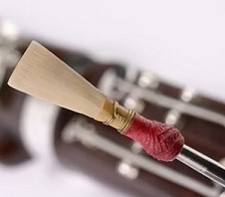Written instructions
The bassoon is disassembled in reverse of the order of assembly.

- Remove the reed and place it in a safe location (reed case preferred).
- Make sure the whisper-key pad is not resting against the nub on the bocal. Remove the bocal taking care to avoid contact between the nub and whisper-key pad. Shake out any water. Place in the bassoon case.
- Holding the wing and long joints securely with your left hand, use your right hand to detach the seat strap. Use your right hand to hold the boot joint and carefully lower the bassoon to the floor.
- Remove the bell joint from the long joint by using a small back and forth twisting motion while taking care to avoid contact between the two halves of the low Bb bridge key. Place the bell in the bassoon case.
- Unlatch the body lock that holds the long and wing joints together.
- Place your left hand around the top of the long joint and your right hand at the top of the boot joint. Use a small twisting motion by turning your hands in opposite directions (left clockwise, right counterclockwise) until the long joint tenon comes out of the boot joint. Place the long joint in the bassoon case.
- Support the boot joint with your left hand and lift the boot/wing assembly so the bottom of the boot joint rests on the chair between your left.
- Place your left hand on the left side of the boot joint and gently wrap your right hand around the wing joint. Use small twisting motions to pull the wing tenon out of the boot joint.
- Place the wing joint temporarily in the case while you swab the boot joint.
- Swab the boot joint. (See Chapter 17: Swabbing for instructions)
- Once the boot joint has been swabbed, put it in the bassoon case.
- Swab the wing joint and put it in the bassoon case.
- Remove the seat strap from the chair and put it in the case.
- Put the reed case in the proper location in the bassoon case.
TAKE CARE:
Be sensitive to any resistance when closing the bassoon case. Resistance means something is not in the right place or is not sufficiently snuggled into its spot. Forcing the lid to close will damage the instrument if something is sticking up out of place.
NOTE:
Make certain the lid of the case is secured (latched or zipped) before picking up the case. If the case is accidentally lifted before the lid has been secured, parts of the bassoon will fall out of the case and become damaged.

Feedback/Errata